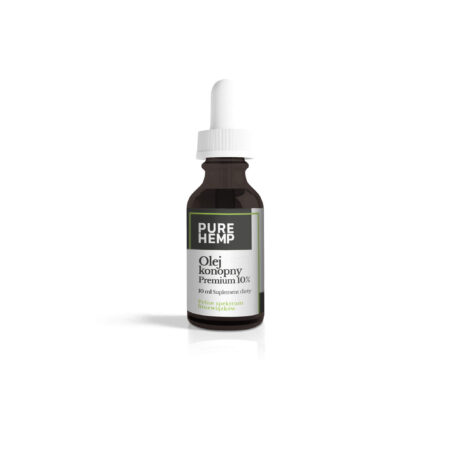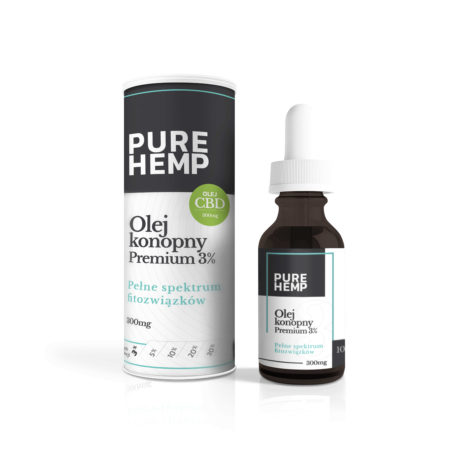What are flavonoids?
Name flavonoids comes from the Latin word flavus signifying the colour yellow. They are a source primarily, but not exclusively, of the yellow pigment that attracts beneficial pollinating insects (not just bees).
A specific type of flavonoid - anthocyanins - can take on blue hues making plants "conscious" photoperiodism.
Due to its biological activity in living organisms, the term is also used for bioflavonoids.
As we know from the article "What are terpenes?' - terpenes are responsible for taste and aroma. However, in the context of organoleptic characteristics, flavonoids give plants their colour.
These compounds were discovered in the 20th century when their existence was discovered in lemons and red peppers. It was Albert Szent-Gyorgyi who isolated and named citron from lemon juice. A little later, researchers discovered that citron was not a homogeneous substance, but a mixture of many different compounds, which today we call flavonoids.
Due to the variety of bioactivities of individual flavonoids, they are classified as P vitamins.
Flavonoids are associated with numerous properties of a health-promoting nature - you will read about this later in this article. Here, I will only mention that the pharmacological activity of flavonoids is recognised as significant in in vitro (test tube) studies. Some properties have not been confirmed in in vivo studies (on living organisms) - which does not mean that this will not happen in the future.
How many total flavonoids are there? Over 8000 ...
There are six (according to other sources, up to eight) types of flavonoids, each of which is metabolised differently by the body. The classification of flavonoid compounds is relatively complex and requires a lot of care when analysing the nomenclature.
In general, all bioflavonoids belong to a broader group - phytochemicals - which also includes, among others, cannabinoids from hemp.
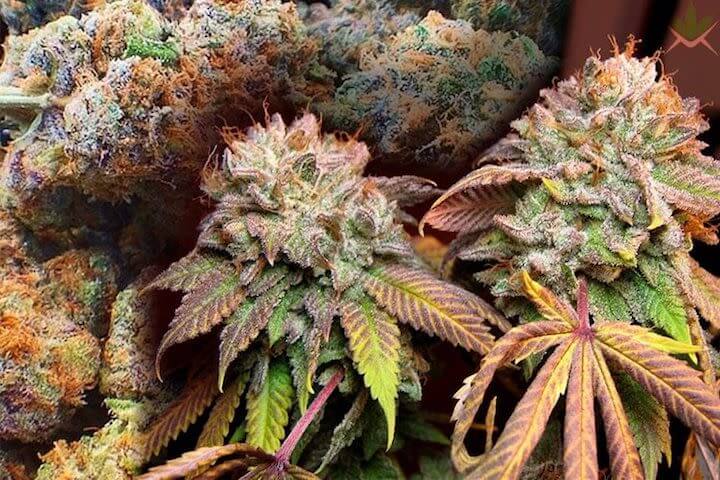
Bioflavonoids - what are they? Types, classification and examples
Bioflavonoids are phytochemicals belonging to the group of natural non-nutrients (NSN). These compounds have no nutritional value, but remain active in the body. They are only found in plants, where they play key protective roles to help plants survive.
In order to make this text useful to you, I will try to identify those classes that are of most interest because of their easy availability in food products and therefore potentially in the daily Polish diet:
- Flawonole - quercetin, kemferol, morin, mirecetin, galangin, fistein
- Flawanole - catechin, epicatechin, epigallocatechin
- Flavanony - hesperetin / hesperedin, naringenin / naringenin, eriodictyol / eriodiktiol
- Flavones - luteolin, apigenin, diosmetin, baicalein, baicalein, chrysin
- Isoflavones - genistein, daidzein, glycitein, formonotein
- Anthocyanins - cyanidin, pelargonidin, delphinidin, peonidin, malvidin
- Biflavonoids - ginkgetin, sylbin
Each of the above-mentioned bioflavonoids requires a separate discussion. The subject is extremely broad and complex, which is why you will be able to read about the details in the following articles dedicated to specific bioflavonoids.
Known and potential properties and effects of flavonoids
The following list is primarily derived from abstracts of scientific studies of varying levels (from test tube studies to human clinical trials). The list represents a collection of properties of flavonoids as a group without distinguishing between types and without assigning to specific representatives. Different flavonoid compounds have different properties.
In a nutshell, flavonoid compounds support the proper functioning of the body by protecting it from toxins and so-called stressors with potentially harmful effects on the body.
Research to date shows that Bioflavonoids can have these properties and effects such as:
- Anticancer - inhibits the growth and activates the cell killing process of certain cancers in in vitro studies - these results have not yet been replicated in vivo or the results were statistically insignificant and do not constitute 'hard evidence', this does not change the fact that flavonoids are the target of many research teams for their effective use in cancer therapy as mentioned in this research
- Antioxidant - they are powerful antioxidants, this is also related to their anti-cancer properties, they destroy free radicals, reduce oxidative stress
- Anti-inflammatory and anti-bacterial - minimises the body's inflammatory response in the face of pathogenic microorganisms, allergens, toxins, fungi and parasites
- Anti-allergic - can minimise the symptoms of seasonal allergies by improving the function of the organs responsible for metabolism and removal of allergens from the body
- Neuroprotective - improve memory, support the maintenance of good vision (anthocyanins), may regulate levels of certain neurotransmitters (e.g. apigenin), some flavonoids or their metabolites cross the blood-brain barrier and may have a protective effect minimising the risk of Parkinson's, Alzheimer's, dementia and cognitive disorders, about which you can read more in English here
- Antidepressants and anti-anxiety - can improve mood and minimise perceived anxiety levels experienced
- Antidiabetic - a diet rich in flavonoids reduces the risk of type 2 diabetes1
- Purifying - among other things, they promote the cleansing of the liver and kidneys, which is also associated with anti-allergic effects
- Anti-atherosclerotic - lowers blood pressure2, inhibit the production of bad cholesterol and triglycerides, protect the circulatory system from oxidation, reduce the risk of heart attack and heart disease, prevent atherosclerosis and varicose veins
- Antiviral - sources indicate potential antiviral benefits against HIV, herpes, rabies, influenza and polio viruses
- Soothing - including painful menstruation and menopause by supplementing estrogen deficiencies
- Participates in the chelation of metals - in vitro studies binds metal ions such as iron and copper, needs confirmation in in vivo and clinical human studies
This all sounds familiar and seems to coincide with the properties shown by cannabinoids in research to date. Among other things, it is on the basis of these convergences that the synergy theory was formulated, which states that cannabinoids in a group and in combination with the flavonoids and terpenes found in cannabis work more effectively than each of them alone.
Where are the most flavonoids?
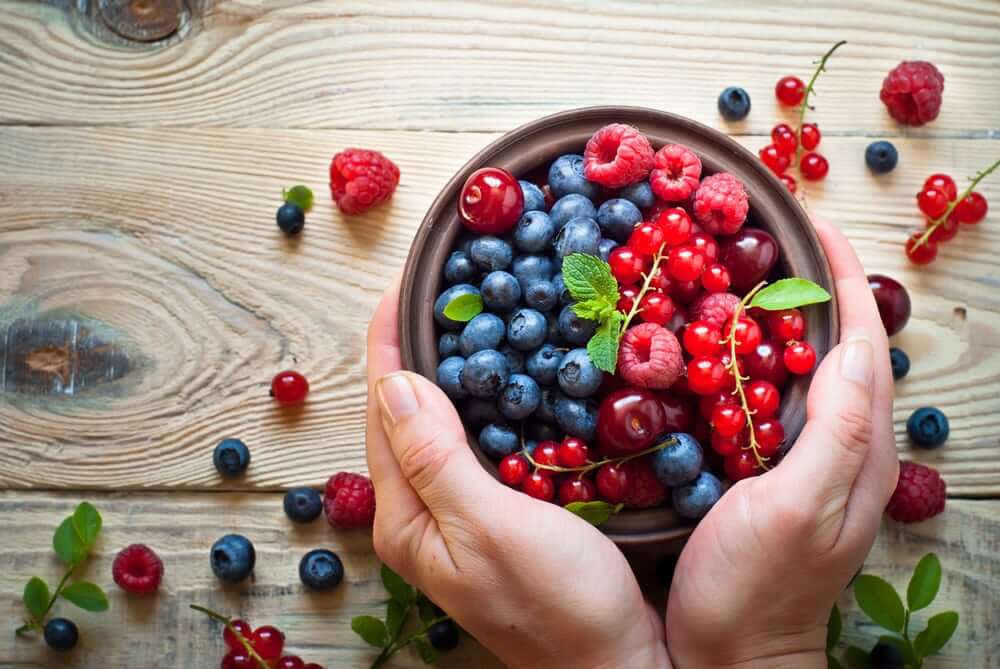
In general, flavonoids are readily available from all fresh vegetables, fruits, herbs, teas and coffee, as well as dark chocolate and honey. The less processed and the fresher the products, the greater the abundance of flavonoids. A diet rich in vegetables and fruit promotes the supply of these important micronutrients to the body.
Some bioflavonoids are only available in specific foods - they are found in some foods, but absent or scarce in others.
The amount and variety of sources of these chemicals consumed is therefore important.
If you want to know which food ingredients contain the highest amounts of particular flavonoids, you can use the website: https://myintakepro.com/ where relevant rankings of bioflavonoid abundance in individual sources are published.
For example: According to MyIntake, the highest content of kemferol is in watercress, rush cabbage and arugula. It is also abundant in kale, among others.
Microgreens - an excellent, and perhaps the best, source of phytochemicals
The young seedlings of vegetables and herbs known as microleaves (in English microgreens).
Research available since 2014 shows that young plants at the cotyledon or very young first leaf stage contain significantly more vitamins, minerals and all kinds of phytochemicals than their adult, mature figures.
A very recent study, which is yet to be published in December 2020 in the Journal of Agriculture and Food Research, seems to confirm this unequivocally, which again in English you can read about at Science Direct
One thing is not in doubt or objectionable: microleaves / microgreens are healthy, very healthy to the point of being tasty, easy to grow and prepare and, by the way, they add great variety to their surroundings with a spectrum of green colours.
How much flavonoids should you consume?
There are no precise guidelines for the daily intake of flavonoids. In theory, the more the better, but ... Well, there is a 'but'.
As with everything, you should not overdo the amount of flavonoids you take. This is especially important if you are taking them in the form of dietary supplements or nutrients. While increased consumption of vegetables and fruit within the limits of satiety should not be a problem, supplementation or overdoing it with herbs can be counterproductive, even harmful.
Problem with setting daily reference doses results, among other things, from the individual characteristics of each organism. It is worth considering a consultation with a professional nutritionist who will choose the right amounts of each ingredient to optimise your diet in terms of intake of bioflavonoids.
The consumption and effectiveness of phytochemicals are strongly linked to their bioavailability in the body. The absorption of flavonoid compounds is also an individual characteristic and depends, among other things, on the composition of the microbiota.
Risks of overconsumption and interactions
Excessive intake of flavonoids is possible. Especially when you supplement from sources other than food. What's more. Flavonoids in excess can be toxic.
The way the body metabolises bioflavonoids also points to the risk of interaction with pharmacological drugs. Personally, I prefer to talk about the reverse relationship, i.e. that drugs interact with food, but the reality is that in the general perception supported by the authority of the medical world, drugs take precedence over ... everything - be it food or supplements. Someone decided on such priorities and not others - perhaps they had arguments other than economic ones to do so.
Are there flavonoids in hemp and which ones?
Hemp is a source of many flavonoids. Some are specific to the plant and their presence in preparations such as CBD oil 10% accounts for the uniqueness of the phytocomposition of these hemp preparations.
Flavonoid compounds can account for up to 2.5% of hemp's dry weight and are only found in the flowers and leaves of the plant. They have not been found in the root and seeds of hemp.
In hemp and oils CBD bioflavonoids such as:
Flavonols: quercetin, kemferol, myrcetin, galangin and fistein
Flavones: apigenin, chrysin, luteolin, orientin, baicalein and baicalein
Flavanols: catechin, epicatechin, epigallocatechin
and hemp-specific: cannflavin A, cannflavin B, cannflavin C, vitexin, isovitexin
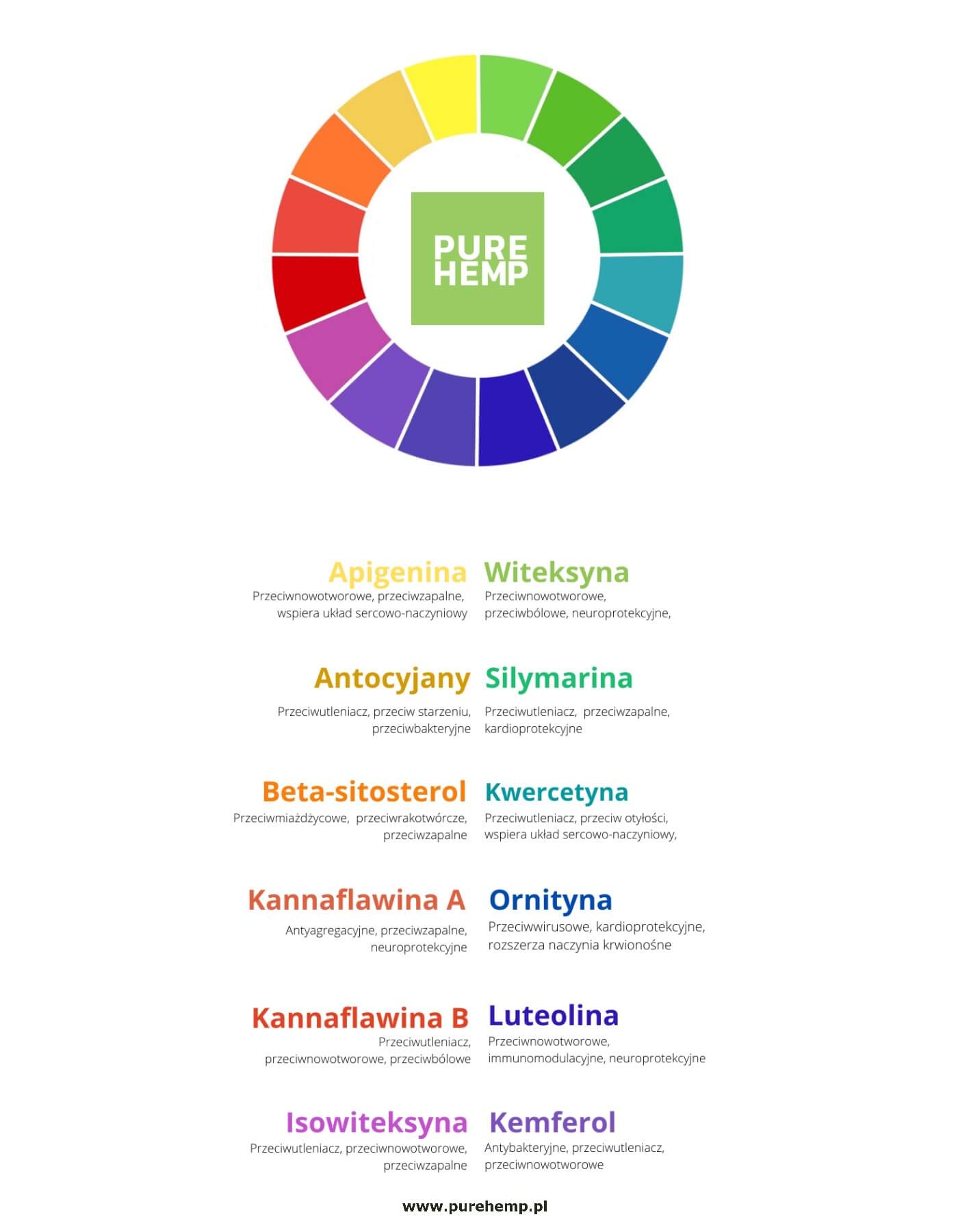
All of the aforementioned flavonoids may have a synergistic interaction with cannabinoids responsible for such a broad spectrum of potential benefits of full-spectrum cannabis preparations.
The topic will be developed further. It is certainly worth taking a closer look at the individual flavonoids and their properties. More to come soon, and in the meantime, I encourage you to share this article with your family, friends and acquaintances and invite you to shop for hemp oils in our shop:
Sources:
- https://ncez.pl/abc-zywienia-/zasady-zdrowego-zywienia/kwercetyna—–wazny-skladnik-naszej-diety
- https://www.fundacion-canna.es/en/flavonoids
- https://lpi.oregonstate.edu/mic/dietary-factors/phytochemicals/flavonoids
- https://examine.com/
You can find disclaimers regarding the content published on the pages of the knowledge base by clicking here.
